

the journal Commerce versus Engineering: The battle of misconduct cases
The two faculties made up over 60 per cent of NAM cases
Jonathan Reilly Senior News Editor
Even in Non-Academic Misconducts (NAM), the Commerce and Engineering rivalry persists.
Presented to the Board of Trustees on Sept. 26, the University approved the Non-Academic Misconduct Annual Report. The report measures NAMs—which are departures from the Student Code of Conduct—from May 1, 2024, to April 30, 2025. There were 1,079 total NAM cases, with 93 per cent taking place in residence. The report also looked at NAM cases by faculty, with Engineering and Commerce students two to three times more likely to be involved in a NAM case when comparing their offence rate to the percentage of the student population.
Arts and Studies students, together making up 70 per cent of the student body, made up 39 per cent of NAM cases.
students twice as involved in a NAM
case, at roughly 15 per cent of the student body, but 31 per cent of NAM cases. Commerce students were also overrepresented, at 9 per cent of the student body but 30 per cent of NAM cases. Together, they were responsible for a reported 61 per cent of cases, despite only making up roughly a quarter of the student body.
Despite requests from Journal to speak with the Deans of Engineering and Commerce about how they plan to mitigate these numbers, the University provided a statement, adding that the numbers for each faculty can vary each year.
“Many cases involve multiple students due to group-related incidents, meaning the number of respondents from each faculty can vary annually,” the
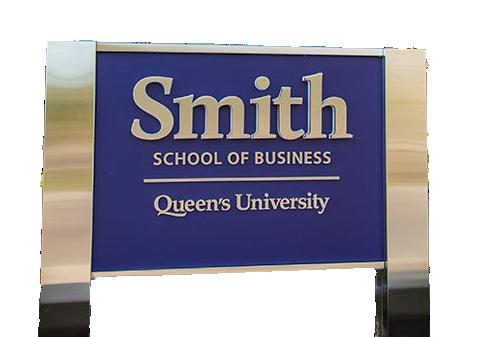

get patches for their engineering jackets, as a primary factor that could lead to more misconduct.
“There’s definitely misconduct sorts of events that are encouraged for all people in engineering to do, and it definitely surrounds the bar culture,” Powell said. “There are a lot of great bars that promote a lot of teamwork and collaboration, a good example of that is the fix and clean bar, where students go and clean elderly people’s houses and help them do chores [...]. But people also create their own bars, and when you give that power to anyone, they make some rambunctious things.”
Specifically, he pointed to drinking bars as something
that could be problematic for first-year students—especially given that they may be unfamiliar
around you, you kind of get the impression that ‘if I don’t drink a lot, then people are going to view me as weak or as not a real engineer.’”
The idea of faculty-culture playing a role was also echoed in an interview with The Journal by Elizabeth Kim, Comm ’28. She explained that “party culture isn’t uncommon, and it’s not frowned upon in commerce.”
Alongside the culture, she added that within the commerce community specifically, finances could play a role too.
“Queen’s commerce is a more expensive program, thus attracting maybe a wealthier demographic. And so, I think that just having that monetary fund at their expense allows them to maybe go out and
not worry about the financial barriers,” Kim said.
Powell explained that generally, in his eyes, the stronger the community, the more misconduct.
“Any super social program is going to have a lot of misconduct, because the more social gatherings there are, the more opportunity for large-scale misconduct and influence from other people.”
Nomination signatures scrapped for AMS executive
Running candidates face Assembly
Lilly Meechan Assistant News Editor
AMS wants to end the “popularity contest” and elect future executives based on a candidate’s platform.
Following the second Assembly of the year, the AMS has revised its Election Policy to eliminate the requirement that executive candidates collect student signatures to appear on the ballot for the upcoming election cycle. The Elections Policy Review Committee brought forward the recommendation.
Motion 4, titled That AMS Assembly approve the amendments to the Election Policy, as presented in Appendix B, was moved by AMS President Jana Amer and seconded by AMS Vice-President (University Affairs) Alyssa Perisa and passed unanimously at the Sept. 29 AMS Assembly meeting, ending the requirement for signatures.

Amer explained in an interview with The Journal the decision behind scrapping the signature requirement to eliminate social barriers and create a fairer, more accessible path for all students to run for executive positions, with the Assembly now having the decision-making power over who will be on the ballot.
The Elections Policy Review Committee, which brought forward the recommendation, was formed by student leaders who have run in elections, as well as various members from the AMS’s civics affairs team and judicial team, who have all taken part in running for elections, according to Amer. The committee was created over the summer to re-evaluate election structures. The committee was dissolved at the AMS Assembly on Sept. 29 after completing its summer evaluation.
revised process now places the responsibility of vetting candidates with the AMS Assembly through a ratification assembly.

Candidates must now present a five-minute pitch, where Assembly will then vote to approve their nomination by a majority of 50 per cent plus one. Only those who have been ratified are eligible to campaign and appear on the ballot.
According to Amer, the

Last school year, candidates seeking to run for AMS executive positions were required to get 125 signatures to qualify for the election. That

number had already been reduced from the previous year, when candidates were required to have 300+ signatures before being eligible to run, Amer told The Journal Amer’s confident that the ratification process offers a more meaningful gauge of candidates than signatures could.
“The ratification assembly is going to be that kind of check mark because they will be expected to come with a platform […] what their goals are, what they’re looking to do, how that timeline is going to look like for them.”
Amer emphasized that the signature requirement presented several issues.
“Nomination signatures never seemed to be a proper marker of the legitimacy of candidates,” she said. “[Candidates] weren’t even allowed to communicate their goals. You weren’t

allowed to talk about literally anything you wanted to do other than ask people that you know to sign this letter.”
According to Amer, the shift is also a step toward making student leadership more accessible, allowing for a better evaluation of the students running.
“It required them [students] to be extroverts and it required them to be people that have pretty large social networks,” she said, “It’s a lot better to assess our students and potential based on their platform.”
She also pointed to an issue of “signature fatigue,” when students are constantly being asked to sign various nomination forms for AMS execs, referenda, and club elections, leading to confusion about whether they were voting or just signing.
Amer emphasized that the change isn’t set in stone. The AMS plans to monitor the upcoming election cycle to evaluate how the new system plays out.

was a former FREC and
The racial and sexist biases of Rate My Professor
Unify Canada turns dialogue into division
‘Most performative male’ at Lay Low Cafe
JOURNAL FILE PHOTO
The motion was approved on Sept. 29
NEWS
The University ended the 2024-25 fiscal year with a $60.1 million surplus
Yael Rusonik Assistant News Editor
The University closed last year with a surplus despite declining international enrollment and the continued provincial tuition freeze.
Queen’s finished the 202425 fiscal year with a reported surplus of $60.1 million, according to Consolidated Financial Statements approved by the Board of Trustees on Sept. 26. The statements attribute the surplus primarily to strong investment returns of over $151 million—without which the University would have recorded a consolidated deficit of $8.6 million.
Recognizing the University’s increasing reliance on investment funds in maintaining financial stability, it has almost doubled its annual transfer from its Pooled Investment Fund (PIF) to its operating budget, with Queen’s transferring $10 million instead of the previous $5.2 million for the next three years. Investment income already re-allocated to the operating budget allowed it to end 2024-25 with a surplus of $15.8 million,
Queen’s avoids $8.6 million deficit through $151 million in investment gains
whereas it would have otherwise seen a deficit of $26.1 million.
In a note accompanying the statements, Vice-Principal (Finance and Administration) Donna Janeic referenced financial constraints the University continues to face, namely the 10 per cent tuition cut Ontario implemented in 2019, the ongoing provincial tuition freeze, and a decline in international student enrollment—with international students providing 26 per cent of tuition revenue last year, despite only constituting 9.5 per cent of enrollment.
Despite these challenges, total revenues for the 2024-25 school year saw an increase of 1.6 per cent, due in part to an increase in research grants and contracts—with large contributions from the Tri-Agencies and the Canada Foundation for Innovation (CFI). At the same time, however, expenses rose by 3 per cent, driven by increased spending on salaries and benefits, externally contracted research, student assistance, and higher utility costs, offset by a decrease in supplies and services.

starting the Duncan McArthur Hall renovation, and completing the JDUC revitalization. Overall, the University spent $78.7 million on building projects and construction in 2024-25.
Major capital projects during the year included beginning work on the Agnes Reimagined project,
In spite of these capital expenditures, Queen’s still reported a $534.9 million deferred maintenance backlog—a collection of repairs to infrastructure and other assets that have yet to be done. Still, only $26.6 million is allocated to deferred
maintenance annually, constituting just 0.69 per cent of the $3.9 billion value of the University’s campus, whereas the statements acknowledge the industry standard as being 1.5 per cent.
Queen’s highlighted the deferred maintenance backlog as being one of the University’s three major financial risks, alongside heavy reliance on grant support and government-controlled tuition, and reliance on international
60 per cent increase in nam violations linked to higher response rate
Student
Misconduct Report shows surge in respondents but steady case numbers
Lilly Meechan Assistant News Editor
93 per cent of misconduct cases happened in residence, NAM reports business as usual.
Queen’s released its 2024–25 Non-Academic Misconduct (NAM) Annual Report on Sept. 26, outlining student conduct trends between May 1, 2024, and April 30, 2025. The report, presented to the Board of Trustees through the University Culture Committee, details incidents of student misconduct across campus and explains how the University is addressing behaviour through a mix of educational, corrective, and restorative measures.
NAM refers to student behaviour outside the classroom that violates the Student Code of Conduct and other related policies, such as the Residence Contract, and the University’s policies on Sexual Violence and Harassment & Discrimination. NAM cases are organized by two severity categories: Category One includes lower-level issues such as
noise complaints or alcohol misuse. Category Two involves more serious offences like harassment, discrimination, or sexual violence, and is handled by the Student Conduct Office.
The Committee documented 1,079 cases involving 1,821 individual student respondents and two student groups. Cases refer to individual incidents of non-academic misconduct, while respondents are the students formally named.
NAM cases were consistent, but the number of student respondents increased by 103 per cent from 895 student respondents reported in the 2023-2024 NAM report. The total respondents for this year’s report were 5.2 per cent of the total student population. 82 per cent of student respondents were found at fault for at least one NAM violation.
According to the report, 2,929 NAM violations were recorded, representing a 60 per cent increase from the previous report. The report attributes the increase in recorded violations to a higher number of student respondents compared to the previous reporting period.
“The increase in total case volume is largely driven by ongoing efforts to hold students consistently accountable to the expectations outlined in the Residence Contract,” the report said.
Category two misconduct cases decreased in volume this year, despite the increase in respondents and violations.
Sexual violence cases dropped 20 per cent, with a 58 per cent reduction in respondents, and H&D cases dropped 83 per cent.
especially regarding mental health, substance use, and overlapping policy violations.
tuition revenue. Even with these risks, the S&P Global Ratings and DBRS Limited granted the University strong credit ratings of ‘AA+’ and ‘AA,’ respectively. Looking forward, the University intends to mitigate the financial pressures by using the short-term reserve, maintaining certain hiring restrictions, redistributing enrollment, maximizing international student intake, and continuing to rely on the Queen’s Renew program.
It was reported that 93 per cent of incidents occurred in residences, which is consistent with previous reports. According to the University, it’s proof of resident life and services.
“[It] reflects the commitment of the university and Residence Life and Services to fostering a respectful living and learning environment for first-year students,” the University wrote in the statement.
Brenda Brouwers announced as special advisor on academic accommodations
In a statement to The Journal, the University stated that 82 per cent of cases were incidents of disruptive conduct. While disruptive behaviour remains the consistent norm, Queen’s NAM administrators reported an increasing complexity in case management, Queen’s appoints its third special advisor in the last five months
Jonathan Reilly Senior News Editor
Following the appointment of a new advisor, changes could be made to academic accommodations at Queen’s.
Announced in the Queen’s Gazette on Sept. 25, the University’s appointed Brenda Brouwer to work under Provost and Vice-Principal (Academic) Matthew Evans as a Special Advisor on Academic Accommodations and Considerations. According to the announcement, Brouwer “will play an important role in clarifying critical aspects of academic
accommodations processes, while also identifying sound practices and initiatives that can be implemented across the university.”
Before her appointment, Brouwer worked at Laurentian University as interim provost and held several leadership roles at Queen’s, including the dean of Smith School of Business and vice-provost and dean of Graduate Studies.
“I’m excited to engage with students, staff, faculty and administrators in a collaborative effort to ensure all students have equitable access to academic activities,” Brouwer said in the announcement.
This appointment marks the third Special Advisor appointment in the last five months, with Michelle Searle stepping into the Community Engagement Advisor role in July
“Queen’s takes an educational and restorative approach to non-academic misconduct,” Queen’s wrote. “Most cases are resolved through accountability processes that emphasize understanding impact, promoting learning, and preventing recurrence.”
Looking ahead, Queen’s plans to conduct a coordinated review of the Student Code of Conduct and other NAM policies to improve navigation and alignment within the system, as stated in the report.
and Eleftherios Soleas taking on the Special Advisor on Generative AI role in May.
The announcement follows the 2023-24 Review of Academic Accommodations and Related Procedures at Queen’s report, which recommended that the University create a working group to investigate changes to academic considerations. The Academic Accommodations Interim Working Group was then struck, which made several recommendations, one of which was the implementation of a new special advisor role.
The group made multiple other recommendations, including the formalization of how accommodations are being applied, requested reviews into the seven-day extension for assignment accommodations, and the tools currently offered to those with disabilities, including the lecture recording software Glean, among other recommendations.
The Board of Trustees approved the statements on Sept. 26.
PHOTO BY JASHAN DUA
Queen’s reports 16 per cent decline in sexual violence complaints
SVPRS clarifies the decline in reports doesn’t necessarily mean fewer incidences
Yael Rusonik Assistant News Editor
Queen’s sees a decrease in sexual violence complaints, still leading to over 50 sanctions on students.
The Board of Trustees approved the University’s annual Sexual Violence Report on Sept. 26, brought forward by Provost and Vice-Principal (Academic) Matthew Evans, and Vice-Principal (Culture, Equity, and Inclusion) Stephanie Simpson. The report, which accounts for May 1, 2024, through April 30, 2025, claimed that 271 individuals attempted to access information, services, and support from the Sexual Violence Prevention and Response Services (SVPRS)—up 23.7 per cent from the previous school year. 161 of the information and service requests made to SVPRS were from new clients, and 110 were from existing clients. At least 19.9 per cent of requests related to sexual assault and 21.7 per cent related to sexual violence, with many students choosing not to disclose the purpose of their request. Those who requested SVPRS services were able to access assistance with
academic accommodations and petitions, safety planning, financial support, and filing police complaints, among other resources.
Ultimately, only 10 complaints of sexual violence were formally processed through the University offices during the 2024-25 reporting period. This is a 16 per cent decrease from the number of complaints made from 2023-2024, and a 61 per cent decrease from the number of complaints made from 2022-2023. In a statement to The Journal, the SVRPS clarified that “a decline in reporting doesn’t necessarily reflect a decline in incidents of sexual violence,” claiming it instead “reflects a variety of considerations that are unique and personal to the student who experienced violence.”
Some of the decline was also attributed to “the nature and timing of the experiences” in the initial report. The SVRPS later clarified that issues of timing are related to where students are in their academic journeys. For example, if a student perpetrator graduated before the complaint was made, then the University can’t proceed with the complaint process.
The report also claimed that “as in previous years, there continued to be an increase in the complexity of the issues faced by our students” this past school year. SVRPS further elaborated on the complexity of these issues, explaining that “solutions can be difficult to find and may be difficult to access” as a
result of “external forces.”
Over the past three years, SVPRS, alongside the Student Conduct Office, have imposed 57 sanctions against students found responsible for sexual violence, with some of these sanctions involving the
direct response to The Journal as to why harsher disciplinary actions are used so sparingly, instead responding to related questioning by simply restating the factors a decision-maker considers when determining an
program discussing consent and intervention that’s considered mandatory for all first years and employees. Last year, compliance in completing this training for campus units ranged from 50 to 100 per cent. The SVPRS did
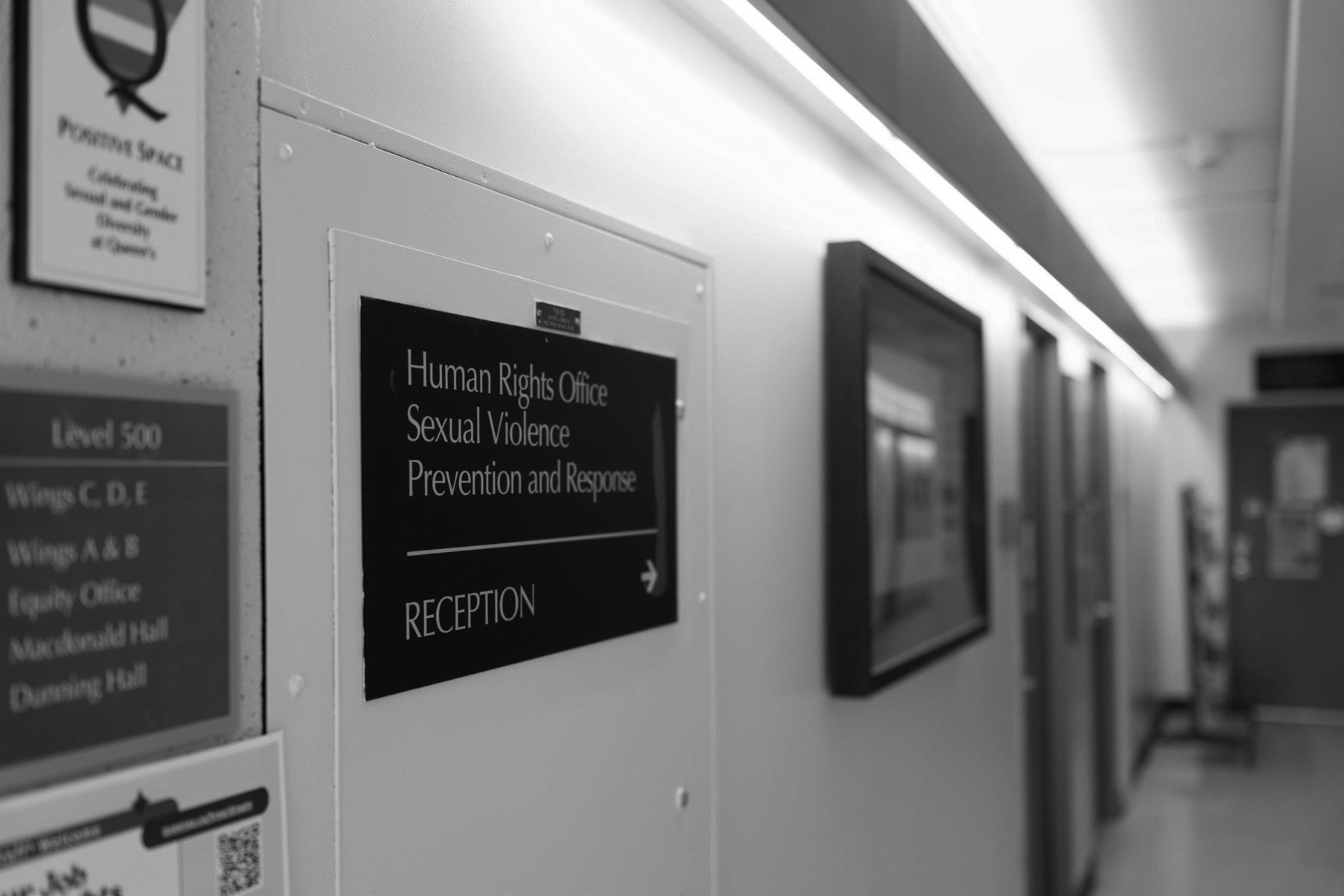
same students. The majority of sanctions imposed involved milder disciplinary actions, including impact reflections, seminars or workshops, and no contact directives. Only two notices of prohibition were introduced, and only one student was required to withdraw.
The SVPRS didn’t offer a
appropriate penalty—including the nature and severity of the breach, the respondent’s response and behaviour, and any other relevant factors.
Among other initiatives, the SVRPS has been attempting to mitigate sexual violence on campus through the continuation of the It Takes All of Us training—a learning
not clarify whether there were any consequences for those who did not complete the training, despite specific questioning from The Journal
The Board of Trustees approved a revised Sexual Misconduct and Sexual Violence Policy Involving Students on Dec. 8, 2023.
Uncontested race for SGPS VP (Finance and Services)
Nan Ma steps in at the last minute to help improve student financial stability
Kaliyha Dennis Assistant News Editor
Previous SPGS Deputy speaker, Nan Ma, JD ’28, hopes to continue supporting the portfolio’s ongoing efforts until the winter elections.
Following the resignation of former Vice-President (Finance and Services) Oishik Bhattacharya, Ma joined the race in the final hours, due to the low turnout with no other candidates running, before the campaign deadline to ensure SGPS operations and financial services continued without interruption. The by-election will be held from Oct. 9 to 10, meaning she would’ve a reduced term—by roughly 4 months—until the role will undergo another election in January.
Before announcing her candidacy, Ma served as the SGPS deputy speaker. She said she stepped down from the role immediately after deciding to run to avoid any conflict of interest. “I wanted to be transparent and make sure the process remained fair for everyone involved,” Ma said in an interview with The Journal Despite running for the
position unexpectedly, Ma explained she’s ready to take on the responsibilities of the role and keep SGPS finances running smoothly until the next election cycle in January.
“My main focus is making sure there are no issues for students and that the SGPS continues to run smoothly,” she said.
According to the SPGS website, the VP (Finance and Services) is responsible for ensuring that members’ fees are collected and allocated fairly through a balanced budget that reflects student priorities. The position also Chairs the SGPS Finance Committee, which oversees the distribution of bursaries, grants, sponsorships, and the review of mandatory fees.
Ma acknowledged that the by-election’s timing in September likely contributed to the low number of candidates. “People have just gotten back to campus and are still building their IKEA furniture—it’s hard for them to keep an eye out for these opportunities,” she said.
“A lot of students might miss election news because it’s buried in their emails
orthey’re not checking Instagram or Twitter as much early in the semester.”
When asked about her goals for the position, Ma said the last-minute nature of her application meant she doesn’t yet have concrete plans. Instead, she hopes to ensure stability in the role until a new candidate is elected in the winter. She added that her background in organization, financial management, and student engagement will help her support the SGPS in the interim.

At Queen’s, Ma serves as a student caseworker at the
Queen’s Business Law Clinic, providing free legal support to local small businesses and non-profit organizations. She also represents her class as the 2L representative for the Queen’s Competition Law Club and is helping organize the club’s annual oral advocacy competition. The election results will be announced on Saturday, Oct. 11 at approximately 9 a.m.
The report was submitted to the Board of Trustees on Sept. 26.
PHOTO BY JASHAN DUA
The by-election will take place from Oct. 9 to 10.
PHOTO SUPPLIED BY NAN MA
Grading the graders: How Rate My Professors reflects bias in gender and race
Research shows student evaluations reflect systemic biases, with women and faculty of colour rated less favourably, professor notes
Lauren Nicol Features Editor
When Clarissa Griffin, ArtSci ’26, builds her course schedule, she always checks Rate My Professors.
While the website has never stopped her from taking a class, she likes to see what other students have said about her professors before the semester begins. Griffin mostly looks at the overall “score” a professor receives, finding it a useful—if imperfect—summary of their teaching. Still, she notices that the reviews tend to be polarized: students either love a professor or can’t stand them.
Founded in ’99, Rate My Professors lets students anonymously review their instructors’ teaching style, course difficulty, and overall experience. According to the site’s social media, it now hosts over 19 million student comments and ratings for 1.7 million professors across 7,500 schools in North America. At Queen’s, many students, like Griffin, turn to it for insight—whether to find the best lecturers or to brace themselves for a challenge.
Griffin explains that while she often checks the site before enrolling in a class, the reviews themselves tend to lack nuance. “I find that the specific comments are
When posting a review, students rate their professor from one to five for teaching quality and difficulty, note whether they’d take another class with them, and leave a required comment on teaching style and communication. They can also answer optional questions—like attendance or textbook use—and add up to three tags such as “tough grader” or “amazing lectures.” Reviews using profanity, derogatory language, or alleging bias may be removed.
Since its launch, copycat sites like Rate My Courses or Rate My Teacher have tried to carve out space online—but none have matched Rate My Professors’ reach or influence, in terms of online traffic.
The main issue that Griffin sees with the Rate My Professors website is biases such as gender, race and especially accents show up in reviews.
“Everyone loves to complain about the professors with strong accents,” Griffin said. “A lot of people complain that [they] couldn’t understand a word they said.”

and faculty of colour.
“There’s that perceived cultural barrier, and that gets reflected in surveys,” Straker said. “So, surveys are really, really problematic in that way [and] they really reflect systemic biases.”
the upper hand, and actually a good thing.”

usually whether the problem is people only leave a review if they love it or they hate it,” Griffin said in an interview with The Journal. “There’s no in between.”
While she understands that professor’s ratings can often be polarizing, she finds that often, when professors have very poor ratings, the ratings tend to be accurate. Griffin said that she has rarely had a peer say that they won’t take a class due to a professor’s overall score and that, in her experience, students use the website to gauge the personality and preferences of their professors .
Professor in the department of Chemistry at Queen’s Jean-Michel Nunzi said in a statement to The Journal that he has experience this bias firsthand with several students explicitly complaining about his French accent rather than providing him with constructive feedback .
According to Nunzi, students who are willing to learn something during their time at Queen’s would likely opt to ignore platforms such as Rate My Professors .
Echoing that sentiment, English professor Scott-Morgan Straker said the site reflects deeper issues, pointing to systemic biases in student evaluations, where gender, race, and accents can influence ratings. He added that research on Rate My Professors shows these biases run deeper than they appear, shaped by systemic barriers that affect how students perceive women
The 2015 study “She does have an accent but…”: Race and language ideology in students’ evaluations of mathematics instructors on RateMyProfessors.com published by the Cambridge University Press found that professors with non-native English accents—particularly Asian instructors—were more likely to face student complaints on Rate My Professors. Straker said this kind of bias contributes to one of his main concerns with the site: how polarized its ratings tend to be.
“I find that it’s mostly people who are really motivated one way or the other to do it,” Straker said. “Either they really, really love the class and they want to say so, or they really, really hated the class so there [isn’t] a great deal in the middle.”
Even though Straker sees these issues as significant drawbacks for the platform, he believes that one positive is that it gives students some power to stand up against the power dynamic between professors and students by leaving critical comments.
“You can rate your professors anonymously [and] this evens the playing field, because even in a university anonymous course evaluation, you’re doing it in the classroom, there’s a power dynamic,” Straker said. “This is a way of giving students
According to Straker, the administration doesn’t consider Rate My Professors in promotion decisions, relying instead on internal surveys such as the Queen’s Survey of Student Experience of Teaching (QSSET).
In an e-mail statement to The Journal, Queen’s confirmed they don’t rely on Rate My Professor for evaluation, stating that they use the QSSET to gather student feedback—though unlike Rate My Professors, those results aren’t publicly available.
“[QSSET’s] purpose is improvement—not course selection,” Queen’s wrote. “Some instructors may also use additional surveys or feedback tools for their own teaching.”
Kieryn Breslow-Bardell, ConEd ’27, said that although he’s never posted a review himself, he often checks the site when choosing courses—alongside the syllabus, degree requirements, and advice from peers.
“[Rate My Professors] can highlight real strengths or issues, but it’s not a full picture and can reflect bias,” Breslow-Bardell wrote in an e-mail statement to The Journal “When many recent comments independently describe the same points, it’s usually a reliable signal [that the reviews are more likely to be accurate].”
Breslow-Bardell said he pays most attention to reviews that give professors around a 3.0 out of 5 rating, finding them more balanced than the extremes. Comments with perfect scores often lack detail, he explained, while 1.0 or 2.0
ratings can stem from poor grades or personal bias. “[Three ratings] are often written by students who enjoyed the course as an elective but weren’t looking for a major challenge, so they tend to balance pros and cons,” Breslow-Bardell said.
He also uses the site to find courses that match his preferences—like group projects instead of timed exams. “I look for the most recent terms first and look for patterns about workload, clarity of expectations, and how well tests match lectures,” he said. “If comments describe clear rubrics, timely feedback, and responsive communication, I’m more likely to choose that [course].”
On the other side of the platform, professors tend to approach the site with more caution. Graeme W. Howe, a professor in the Department of Chemistry, explains he generally avoids his Rate My Professors page, worrying that the small number of reviews limits how constructive the feedback can be.
“[I] assumed that the site would largely be host to a popularity contest, and I have no idea how I’d fare in one of those,” Howe wrote in an e-mail statement to The Journal
Story continued online at www.queensjournal.ca
Rate my Professors was founded in ’99. GRAPHIC BY ARDEN MASON-OURIQUE
Unify Canada turns dialogue into division
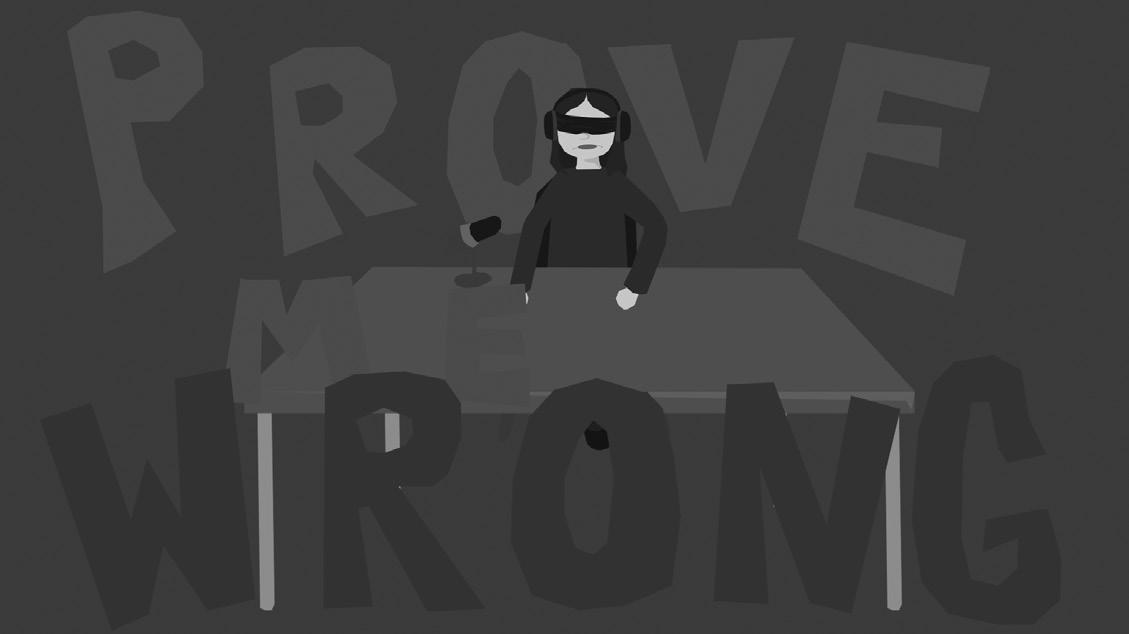
There’s nothing unifying about a booth designed to fuel political divides amid rampant polarization.
On Sept. 29, Unify Canada 1867, a group that boasts its support of “individual liberty, free markets, the traditional family, and limited government,” set up a booth on campus with a sign labelled “GUN OWNERSHIP IS A RIGHT.”
The table included a subsequent sign encouraging students to try and change their mind, as well as bible and a camera and microphone so the videos could later be posted to social media. The reality of setups like these is that they aren’t designed to spark meaningful conversation, but instead, use inflammatory language to garner views on social media and foster division.
Genuine political dialogue comes in the form of understanding, notbuttonholding issues and a hardheaded political agenda that refuses to consider
SILENCE ISN’T NEUTRAL —IT’S COMPLICITY
Eva Sheahan Features Editor
This article contains discussions of genocide, war, and civilian deaths that some readers may find distressing.
Queen’s is once again being called upon to divest from Israel, and once again, they’ve had nothing to say in response.
The University’s silence isn’t surprising—but it’s made me question my own. As a student journalist, I understand the fear of speaking out on “controversial” issues. But Tuesday marked two years since Hamas’ attack on Israel—a tragedy used to justify a full-scale genocide that’s become an attempt to erase the Palestinian people. Too many have died since Oct. 7 for silence to feel like an option.
Some will bristle at my use of the word genocide. It’s one of the most contested words in the English language—and one that many newsrooms, companies, and public figures won’t touch. Israel’s financial and media influence ensures that even the bombing of hospitals and refugee camps must be softened as “acts of war,” lest anyone risk their career by calling it what it is.
the very issue Unify Canada claimed the discussion table was designed to mitigate.
provide Unify Canada with the internet rage bait they’re so desperately seeking.
other perspectives. The group’s representative claimed the table was intended to encourage discussion and respect on either side of the political spectrum. However, the attendee, Sarah—who refused to provide her surname for security reasons—clearly wasn’t open to considering a different opinion.
Students who attended the booth said she redirected the conversation to set talking points and didn’t take the time to consider their comments.
From the titles of Unify’s YouTube videos alone, you can tell they’ve no interest in engaging with other perspectives. Titles such as “He Didn’t Want a Debate…He Wanted a SHOWDOWN” and “She RAGED at My Sign—And Accidentally DESTROYED Her Own Argument” don’t suggest an interest in genuine conversation. Instead, videos like these just add fuel to the fire of growing ideological polarization,
If the table’s representative wanted to proudly stand behind her beliefs, she should’ve at least offered The Journal her last name. Sarah’s safety concerns are understandable following the assassination of Charlie Kirk on a university campus; however, if safety were truly a priority, she wouldn’t have set up a booth that was so obviously intended to incite incident. If anything, the Unify Canada YouTube video overdramatizes their time at Queen’s.
In a video response to The Journal’s article on the discussion table, Sarah makes it seem like The Journal plotted to have the group removed from campus, when in reality, campus security responded to an external call. The Journal reported that the group left without incident. The YouTube video didn’t advance meaningful discourse; instead, it tried to discredit the impartial reporting on the booth. Targeting journalists does little to foster the productive dialogue Unify claims to be inspiring.
Tables like these are more likely a cash grab—a feeble attempt to use politics to garner publicity and elicit donations via YouTube comments. Many students elected not to engage with the booth lest they
The booth’s mission was ideologically flawed and unnecessary in the Canadian context. The group argued that guns were a fundamental element of self-defence; however, this typically American argument doesn’t hold up as well in Canada. Unlike most U.S. states, Canada has no Stand Your Ground Law, meaning Canadians have a duty to attempt to retreat before using lethal force. Unlike the U.S. Constitution, the Canadian Charter of Rights and Freedoms doesn’t grant a right to bear arms.
Unlike many U.S states, Canadians have direct access to their Members of federal and provincial Parliament. Maybe the members of Unify Canada’s time would be better spent in conversation with real political actors rather than stirring up controversy online by bothering youth on university campuses.
The booth was both unnecessary and a symptom of an internet culture that pits political opinions against each other under the guise of inspiring unity. Unify Canada’s booth wasn’t a display of respectful engagement, but a ploy for internet controversy and an eyesore for passersby.
—Journal Editorial Board
Fixing Canada Post’s business model starts with paying its workers
Better business models shouldn’t be at the expense of employee wages.
Canada Post has submitted an updated offer to the union representing 55,000 striking postal workers, maintaining most measures from its latest offer but removing the signing bonus for employees. The provisions include a 13.9 per cent wage increase over four years but hasn’t updated the health benefits or offered to enroll employees in a pension plan. The bottom line is that workers don’t strike without cause—it’s a last-resort effort to secure fair, livable wages.
Postal workers perform an essential public service and deserve fair pay for it. Supporting unions matters—even when it’s inconvenient—because that very inconvenience proves how vital their work truly is.
Although Canada Post hasn’t turned a profit since 2017, workers shouldn’t bear the consequences of poor management or a shifting digital economy. It’s time for Canada Post to adopt a sustainable business model that ensures employees are paid fairly.
In ’88, Air Canada, a then Crown Corporation, was no longer profitable,
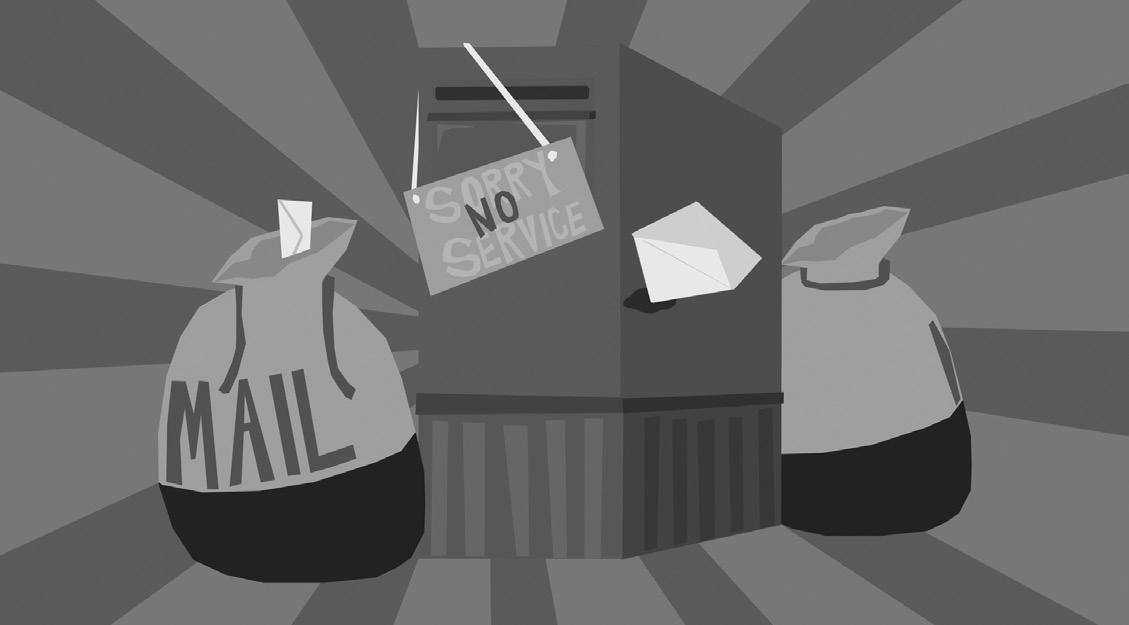
and the government sold their shares to the public. Now, nearly 40 years later, Air Canada turns a consistent profit. The Netherlands privatized their postal service in ’94 and is now able to pay its employees adequately.
The Canadian Government and Canada Post need to get creative about their solution for declining profitability in the postal sector, and cutting employee wages shouldn’t be on the table. Privatization’s a strong option, but it would need to be done correctly. If privatized, Canada Post should operate under a Universal Service Obligation, ensuring all Canadians can access their mail—no matter how rural their residence.
Happy employees are 13 per cent more productive, and by paying its employees
and providing benefits, Canada Post could become vastly more efficient. If Canada Post wants its employees to do their jobs, it should find a way to pay them well and respect their needs.
Ultimately, the future of Canada Post depends on its ability to adapt without sacrificing the needs of the employees who are essential to keeping the postal service running. Many require Canada Post for access to important documents and medications.
The path forward for Canada Post needs to involve big changes, but it shouldn’t come at the expense of employee wages and benefits. —Journal Editorial Board
ILLUSTRATION BY CLAIRE BAK
ILLUSTRATION BY CLAIRE BAK
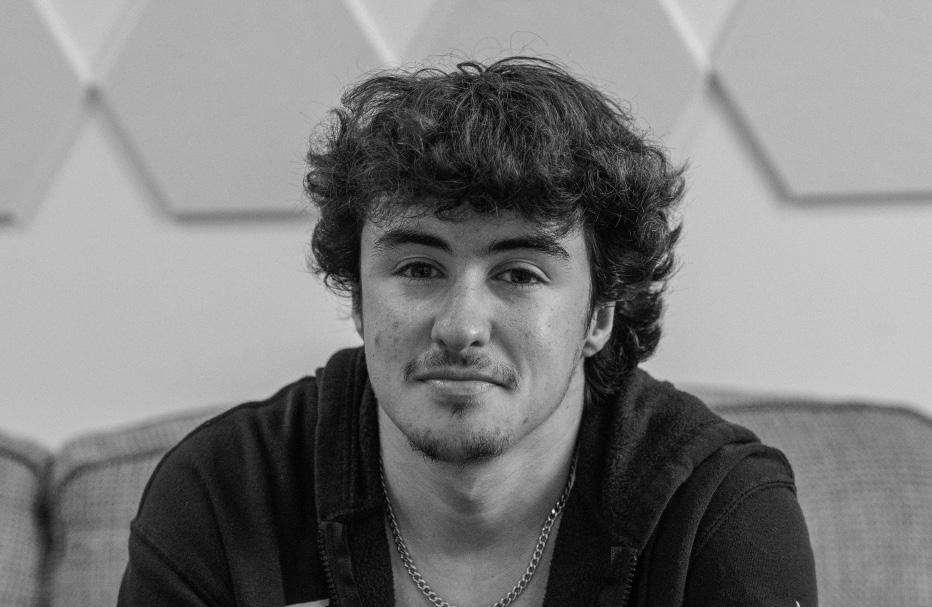
Reckless driving is a choice that continues to
The friend I lost to speed and what his story taught me
Emmet Paradis Contributor
Trigger Warning: This article discusses reckless driving and fatal motor vehicle accidents and may be distressing for some readers. The Canadian Mental Health Association Crisis Line can be reached at 1-833-456-4566.
I still remember the way the red rims on Nick’s car caught the light.
The last time I saw them, flashing under police sirens, reflected a reality I never imagined I’d face. Nick wasn’t just another driver in a tragic crash. He was my friend, and his death wasn’t random. It was the result of a reckless decision. One I wish he’d never made.
We often think of reckless driving as something that happens to other people, as if our own lives are insulated from the consequences of risk. But now, almost a year after losing Nick, I’ve learned that consequences don’t wait. They arrive fast, without warning, and they never leave.
Nick’s story isn’t unique. It’s just one version of a much larger, preventable pattern.
In Ontario, young drivers are overrepresented in nearly every category of serious and fatal collisions. According to Transport Canada, drivers aged 16 to 24 are involved in fatal crashes at a rate nearly three times higher
than drivers over the age of 25. Speeding, impaired driving, and distraction continue to lead the list of causes.
Despite these statistics, Ontario’s current approach to reckless driving doesn’t do enough to address the psychology behind it. Especially among young people who see risk-taking as normal or even thrilling. In 2007, the Ontario government implemented “stunt driving” laws, which impose strict penalties for speeding 40 km/h or more over the limit. Since then, police have laid thousands of charges each year. But numbers aren’t dropping. In 2020 alone, a total of 8, 270 stunt driving charges were laid by the Ontario Provincial Police.
Enforcement isn’t solving the problem, because the issue isn’t just legal. It’s cultural.
Students are caught in a dangerous contradiction. We’re told to value freedom, independence, and living in the moment, yet we’re rarely taught what responsibility behind the wheel truly means.
On Nov. 20 last year, Nick went to our friend’s birthday party downtown. I stayed at school late that night, working on a project for my journalism class. That night, his car scraped an inward-leaning wall on the highway and caught fire. And when I think about Nick, I
don’t just think about the crash. I think about how easily it could've been anyone else.
Nick struggled with anxiety, though he never said it out loud. Like many young men, he bottled up his emotions until they came out as recklessness.
In post-secondary school, it’s not uncommon to hear about students speeding home from a party, driving after having “just a few drinks," or texting at 100 km/h. These aren’t isolated cases of poor judgment. They’re symptoms of a social environment that rewards impulsivity and dismisses fear as weakness.
Driving fast isn’t just thrill-seeking; it’s coping.
A 2025 study in the Journal of Psychological Perspective found that anxiety, depression, and impulsivity are major predictors of risky driving behaviours among youth. We need to treat reckless driving as part of the mental health crisis, not separate from it.
Yet public messaging about road safety is stuck in the '90s. Billboards of smashed cars, detached slogans like “Don’t drink and drive.” These scare tactics don’t speak to the emotional roots of the problem.
For young people, fear fades quickly. Identity doesn’t. If driving fast feels tied to self-worth, no law or ad
campaign will fix it alone. What we need is a cultural reset. One that connects accountability with empathy instead of shame.
That starts with education. Ontario’s driver’s education programs spend hours on technical rules and road signs but barely touch on emotional decision-making. Teenagers should be learning about how stress, grief, or even a bad day can affect their reaction time and judgment. We should be talking about what impulsivity looks like, not just what speeding is.
Queen’s and other universities could take part in that shift by incorporating safe-driving awareness into campus wellness initiatives.
We've have mental health campaigns and services, drinking awareness weeks, and consent education. Why not an annual campaign on responsible driving?
If schools can talk about the dangers of drugs and alcohol, they can talk about the choices that kill more students every year.
Accountability also means changing how we talk about tragedy. When someone dies in a crash, we call it an “accident.” That word erases the decision that led there. If someone texts and drives, or speeds through a rainstorm, that’s not an accident; it’s a choice. That language matters. It
BY JASHAN DUA
haunt us
shapes how we see risk, how we assign responsibility, and how we prevent future loss.
Every time I drive past the spot where Nick’s crash happened, I think about how easily I could’ve been in that passenger seat. Survivor’s guilt is heavy, but it’s also what motivates me to speak up.
Reckless driving doesn’t just take lives; it leaves those affected by the loss stuck with questions they’ll never answer. Including what would have happened if I'd gone to that party with him or if he'd waited five minutes.
Nick’s life ended on that highway, but his memory didn’t. It lives on in those who loved him and the lessons his story leaves behind: slow down, think twice, and remember that no text, no emotion, and no rush is worth a life.
The truth is simple. Reckless driving isn’t an accident; it’s a choice. And it’s one we keep making because we refuse to see it for what it is: preventable. I never got to say goodbye to Nick. But maybe this is how I say it. By making sure his story changes the road for someone else.
Emmet Paradis is a first-year political studies student.
Emmet reflects on reckless and impaired driving and how our attitudes towards it are destroying society.
PHOTO
The future of food: Queen’s experts on sustainable eating
Researchers say sustainable eating starts with local choices and community action
katarina krivokapic
Business, Science & Technology Editor
For students, the EAT-Lancet report shows that how we eat’s inseparable from how we live.
As the EAT-Lancet Commission renews its call for a global “planetary health diet,” students are being reminded that sustainable eating’s as much about context as it’s about choice.
The report, updated this fall, describes dietary changes that could reduce disease and environmental harm, but its recommendations have led to debate over how global targets might translate to daily life. For students shopping on tight budgets, sustainability can feel like an abstract goal rather than a daily decision.
In an interview with The Journal that Kristen Lowitt, associate professor in Environmental Studies at Queen’s, said the report’s strength lies in connecting ecological boundaries to what
we eat. “It’s not prescriptive,” she explained. “It’s not saying you can’t have meat, or you must eat tofu—it’s asking how we adapt these global goals to our local ecologies and cultures.”
Lowitt said that for students, the question becomes what a sustainable diet looks like in their own communities. “It’s about what grows well where you are, what’s culturally meaningful, and what’s affordable,” she said. Although reports like EAT-Lancet often speak in global terms, she stressed that diets remain “place-based” and must reflect local food systems, traditions, and access.
Still, she cautioned that the politics of food can’t be ignored. “A handful of corporations exert control over much of what’s grown, processed, and sold,” she said. “That influences what’s available and what people can afford.”
She added that shifting away from a corporate-driven model of food production toward one that’s more diverse, resilient, and
A study offers the first treAtment to slow huntington’s diseAse
A breakthrough treatment shifts hope for those facing Huntington’s disease
Anaya Sharma Business, Science & Technology Editor
In a recent development, researchers have demonstrated that a one-time gene therapy can significantly slow down the progression of Huntington’s disease, offering the clearest evidence yet that the disease’s course can be altered.
Huntington’s disease is a rare genetic neurodegenerative disease that annually affects one in 7, 000 Canadians, characterized by the breakdown of nerve cells in the brain, and has previously
been believed to be untreatable. The disease is caused by a mutation in a gene called the HTT gene that codes for a protein called huntingtin. Since it’s an autosomal condition, meaning it affects chromosomes that aren’t sex chromosomes, there’s a 50 per cent chance that a child of an affected parent will develop Huntington’s disease later in life. In Canada, symptoms for Huntington’s disease begin appearing between the ages of 35 and 55, and life expectancy after diagnosis is limited to 10 to 25 years.
ArtSci ‘84

Ted Hsu
SEEKING VOLUNTEER PATIENTS FOR HEALTH SCIENCES LEARNERS
You’re a great fit if you: have an interest in the health sciences seek to help shape the future of patient care want to be a part of the learning process
The Perks: no fixed commitment professional reference/verifier parking/taxi provided
Questions? [E]: hscelp@queensu.ca

community-based could help achieve better planetary outcomes in our diets.
Lowitt pointed to the Kingston Food Policy Council as one local example of change in action. The council’s developing a regional food strategy to strengthen community food systems and make local produce more accessible. “Students can take part in those conversations,” she said. “It’s not just about what you buy, it’s about how you participate as a citizen.”
Dr. George DiCenzo, associate professor in Biology and Chemical Engineering, approaches the issue from another angle: the soil. His research explores
However, a recent clinical trial conducted by uniQure, a biotechnology company, and University College London’s Huntington’s Disease Centre claims to slow the progression of Huntington’s disease by 75 per cent, according to the company’s press release on Sept. 24.
The trial involves insertion of the harmless viral vector, a modified version of a virus genetically engineered to safely deliver genetic material such as a therapeutic gene into cells, AMT-130, directly into brain tissue through minimally invasive neurosurgery.
This kind of one-time gene therapy is unparalleled by the current standard of care for those affected by Huntington’s disease. AMT-130 gene therapy that targets the HTT gene’s disease-modifying, targeting the underlying cause of Huntington’s disease, whereas the current
how microbes could reduce agriculture’s carbon footprint by replacing or supplementing chemical fertilizers.
“Nitrogen fertilizers are essential for maintaining yields,” DiCenzo said in an interview with The Journal. “But they’re also a major source of greenhouse gas emissions—both when produced and when applied.”
Through the multi-university BENEFIT Project, which focuses on optimizing microbial inoculants for Canadian crops, his team is developing products that help plants use nutrients more efficiently and thrive. “Even a 10 to 20 per cent
disease management options for Huntington’s are symptomatic, addressing only the symptoms of the condition, not its root cause.
Current care options treat the triad of Huntington’s disease symptoms–chorea, irregular, random movements, dementia, decline in memory and cognition; and psychiatric disorders–with oral medication such as tetrabenazine, which treats chorea, as well as antipsychotics.
In an interview with The Journal, Neurology assistant professor from the Department of Medicine at Queen’s, and Neurologist and Movement Disorder Specialist at Kingston Health Sciences Centre, Dr. Nicholas Cothros shared his thoughts about the trial and its results.
“The study authors [Tabrizi, S., et al.] revealed early signals in their data that are very

reduction in fertilizer use would have a meaningful impact in terms of meeting environmental targets,” he said.
DiCenzo noted that the challenge is often one of trust rather than technology or science.
“Growers have to trust these products,” he said. “Historically, there have been poor-quality microbial products on the market, especially where there’s little regulation. Earning that trust means proving these solutions actually work.”
Story continued online at www.queensjournal.ca
encouraging.” Dr. Cothros adds that the early results in the study, though promising, are preliminary. He mentions that the claim of the 75 per cent disease progression reduction after 36 months of the therapy is a composite measure that comes from aggregated data and dependent variables. Dr. Cothros warned against the potential risks of gene therapy. Since the therapy uses the viral vector AMT-130, it can trigger immune responses, which can result in inflammation of the brain tissue and edema, buildup of fluid in the brain, which can be fatal.
Story continued online at www.queensjournal.ca
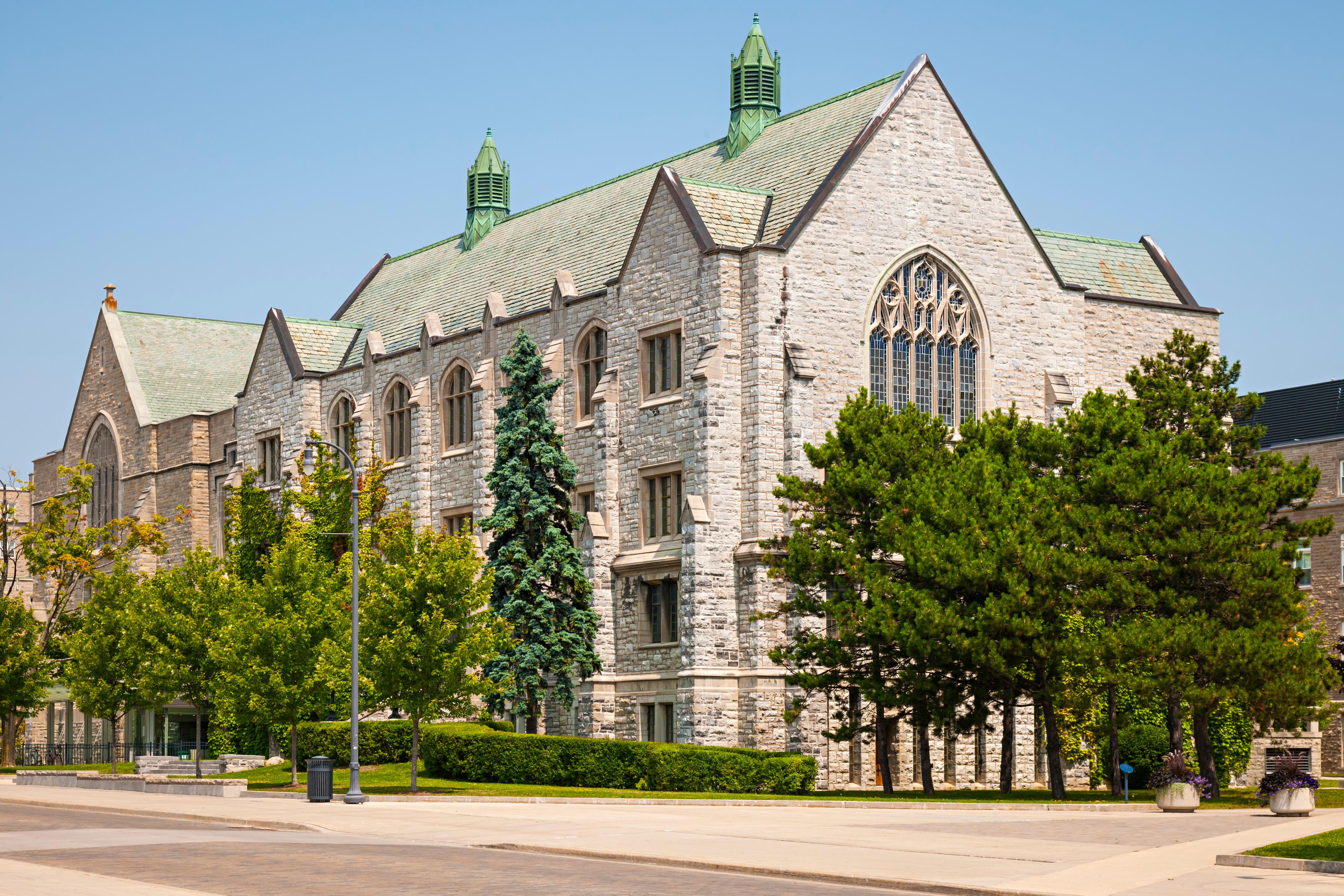
Need assistance with OSAP or other provincial services? My office can help!

Gaels men’s hockey drop opener aGainst carleton, rebound versus ottawa
Queen’s improved their effort to win against the reigning national champions
Taahaa Lone Senior Sports Editor
This weekend, the Gaels men’s hockey team threw themselves into the fire and emerged victorious.
Queen’s opened their 2025–26 campaign with two home games
before Queen’s clawed back. On the penalty kill, Liam Tanner, Kin ’28, and Cameron Tolnai, Comm ’27, connected on a two-onone rush to make it 3-2. The Gaels generated sustained pressure the rest of the way thanks in part to standouts Tanner, Castle, and
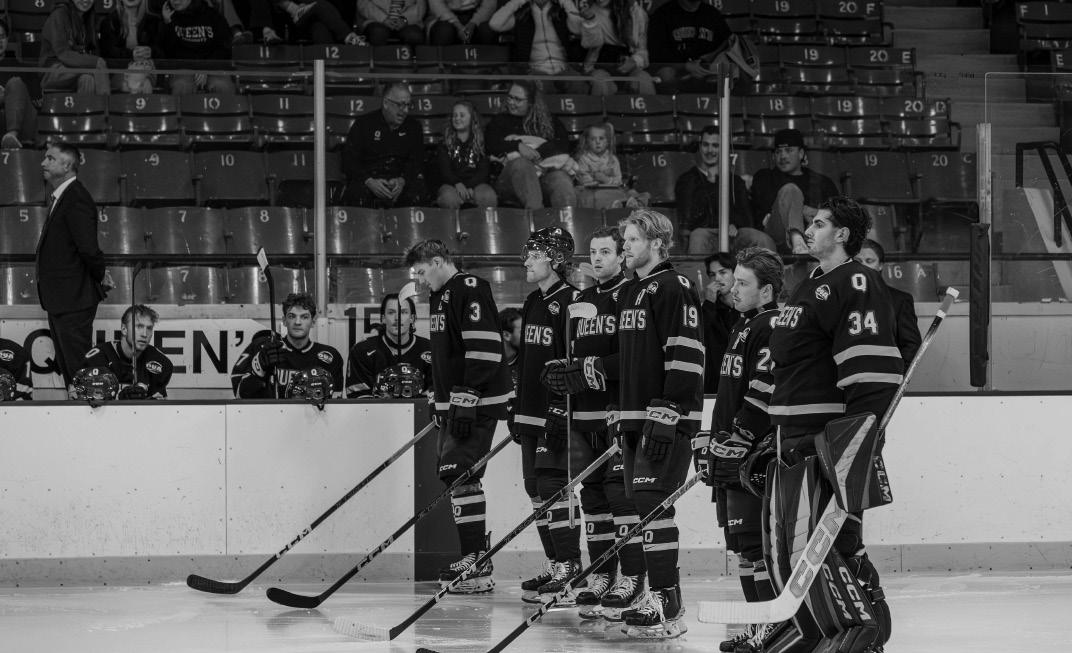
that showed both adversity and perseverance. The Gaels fell 3-2 to the Carleton Ravens on Oct 3. before rebounding less than 24 hours later with a 6-5 victory over the defending national-champion Ottawa Gee-Gees on Oct. 4.
Friday’s opener was physical from puck drop. First-year Aidan Castle, ArtSci ’29, cleaned up a rebound for his first goal as a Gael ten minutes in. Carleton equalized quickly thanks to a sharp shot from Nick McCarry, before Ravens freshman Robbie Rutledge scored a highlight-reel first goal late in the frame to take a 2-1 lead into intermission. The end of the first got chippy after Sam Marburg, ArtSci ’27, was caught up high racing for a loose puck on the forecheck, and the ensuing scrum sent a player from both teams to the penalty box.
The Ravens stretched the gap early in the second period
Kolton Cousins, Comm ’27, but couldn’t convert the tying goal.
Despite several strong stops from goaltender Ian Michaelone, ArtSci ’29, in his university debut, Carleton’s structure held.
While praising the performance of the freshman Michaelone, Head Coach Brett Gibson told The Journal in an interview after the game that the team’s compete level needed to improve. “It’s hard to win in this league, and we didn’t play to our standard,” he said.
The next day, it was clear that Gibson’s concerns were addressed.
On Saturday, Queen’s exploded offensively against Ottawa.
Marburg, tied the game on the power play midway through the first period, followed quickly by goals from Cousins and star Nolan Hutcheson, ArtSci ’26, to give the Gaels a 3-1 cushion after 20 minutes.
Tolnai extended the lead early in the second, slipping a shot
through the five-hole of Ottawa’s Francesco Lapenna to make it 4-1. Rookie Sebbie Johnson, ArtSci ’29, later buried his first as a Gael to restore a three-goal cushion, and Hutcheson added another power-play tally to make it 6-3 through two periods. The Gee-Gees mounted a late push with two third-period goals, but goaltender Aidan Spooner held firm as Queen’s secured its first win of the season.
The game, once again, was violent, featuring an ejection for Ottawa’s Tommy Bouchard due to a dangerous hit on Ian Lemieux, ArtSci ’27. Still, the Gaels kept their cool.
“It’s hard to win in this league. They’re the national champs,” Gibson said. “For us to beat them says a lot about our group. It wasn’t perfect, but we got two points, and that’s what matters.”
Gibson praised his veterans for leading the turnaround. “Hutch is a pro,” he said, referring to OUA All-Star Hutcheson. “He had a tough night Friday and a great night tonight. Hard work equals results.” He also credited Cousins for sparking the top line after a frank conversation. “He challenged me a little bit, so I put him on the first line, and he got that big line going.”
Discipline and special teams were decisive. “Every time they gave us an opportunity, we capitalized,” Gibson said. “If we stay disciplined, our power play can be a serious weapon.”
Beyond the goals, Gibson highlighted the shot-blocking and leadership that closed out the win. “The goals are nice, but it’s the sacrifices that I see,” he said, pointing to Lucas Peric, ArtSci ’26, for a key block in the final minutes.
With long-term injuries to Gaels stars such as Derek Hamilton, ArtSci ’27, and Ethan Larmand, ArtSci ’28, Queen’s was forced to dress six first-year players. Still, they kept composed. “It’s trial by fire,” Gibson said. “Offensively, I’m not worried about them. It’s the defensive side we’ll keep teaching.”
The Gaels will take the trip to Quebec to face the Université du Québec à Trois-Rivières Patriotes on Oct. 10, before facing the McGill Redbirds the next day.
Queen’s women’s soccer take big win over Nipissing, drop game against Ottawa
Weekend also showcased the Gaels’ ‘Kick for the Cure’ initiative for breast cancer research and awareness
Taahaa Lone Senior Sports Editor
This weekend, the Gaels took home a win and played for something bigger than soccer.
Queen’s women’s soccer showed both grit and heart in a gruelling back-to-back, rallying for a thrilling 4-3 comeback win over the Nipissing Lakers on Saturday before falling 3-1 to the University of Ottawa Gee-Gees in Sunday’s ‘Kick for the Cure’ match in support of breast cancer research.
Going into the weekend, the Gaels were ranked 10th nationally, with Nipissing and Ottawa placing sixth and third, respectively.
Saturday’s clash with the Lakers was frantic from start to finish. Nipissing jumped ahead by a score of 2–0 before Gaels star Seema Sakran, Kin ’26, halved
the deficit late in the first half, finishing a feed from Mattson Strickler, ConEd ’26. When the visitors restored their two-goal cushion early in the second, the Gaels responded with urgency.
Sakran’s second goal, assisted by Peyton Wynn, HealthSci ’29, sparked the rally. Kendra Couto, Sci 26, buried a penalty in the 76th minute to tie the game, and Strickler completed the comeback three minutes later to secure Queen’s seventh win of the season.
Head Coach Dave McDowell, ConEd ’87, praised his team’s resolve. “We showed a lot of gumption in how we approached it,” he told The Journal in an interview. “Even after they scored, our focus was really good. Our heads never dropped, and we kept going at them.”
Less than 24 hours later, Queen’s returned to the pitch for
Cloey’s Corner: The CFL
isn’t broken, so why fix it
The new American makeover is unpatriotic and unnecessary
Cloey Aconley Editorials Editor
Chasing the NFL, the CFL’s new rules could cost Canada its game.
Starting in 2026, Canadian Football League (CFL) teams will have to abide by a 35-second play clock and will be unable to score a single point from unreturned missed kicks. By 2027, CFL fields will become ten yards shorter, and the goalposts will move from the front of the end zone to the back.
While changes, such as modifications to the play clock, are needed to move the game along, others are an unnecessary attempt to mirror the National Football League (NFL), risking the erasure of the distinctly Canadian quirks of the CFL.
Perhaps the most notable change is teams’ inability to score points for missed kicks. Previously, a missed kick that stayed in the end zone could be returned by the team to gain yardage. Unreturned, the missed conversion would award the kicking team a single point or a ‘rouge’. The rule puts pressure on teams to return missed kicks, occasionally resulting in outstanding returns that’re unseen in the NFL, where the goalposts sit at the back of the end zone. Most notably, this was seen in the ’87 Grey Cup, where Toronto missed a field goal, and Edmonton scored off a 112-yard return.
The shrinking field size is an added challenge on two fronts. The large presence of Canadian football stadiums was an iconic symbol of the CFL. In the Prairies, where the CFL is most popular, football stadiums stand out as a massive landmark in the midst of sprawling prairies—a cultural epicentre for many communities. The rule changes are supposed to increase viewership; however, they don’t seem to be learning from the places where the CFL is already thriving.
Regulatory changes to field sizes also present a challenge for U Sports and smaller developmental leagues. The CFL has long drafted U Sports athletes to supply homegrown talent; however, the changes in infrastructure to meet CFL regulations will be costly. On Sept. 22, the U Sports governing body stated that they will be consulting with members and
stakeholders to decide if they will uphold the new regulations. One rule change that’ll impact the game for the better is the 35-second play clock. Previously, teams had 20 seconds to run their next play, but only after the down was marked and substitutions were made. Now, as soon as the last whistle is blown, teams will have a uniform 35 seconds to run their next play. This will enhance the game’s flow and uniformity across referees.
The CFL’s new rules are clearly intended to increase viewership, which has been declining by over 6 per cent year over year. In 2025, only Saskatchewan and Winnipeg managed to turn a profit, and challenges of viewership would be better addressed by a better marketing strategy than by fundamentally changing the rules of the game.
Despite being in financial trouble, the Grey Cup is one of the most-viewed television programs on Canadian broadcasting. Now imagine what the league could do with more than a 110 thousand per player marketing spend. The current “marketing money” is allocated to players individually and has faced criticism for being used to circumvent player salary caps instead of promoting the league. Clearly, a more responsible marketing model is needed. Everything considered, the new rules represent a concerning move away from enhancing the game and towards appealing to the crowd’s decreasing attention span. When announcing the changes, Stewart Johnston, the CFL’s commissioner, said the changes were to make the game “even more entertaining, and to win in the attention economy.”
Football’s always been a game of stops and starts, and the CFL shouldn’t try to reconfigure itself just because viewers have a decreasing attention span. Though the new play clock has its benefits, regulations on field size and kick returns are clearly intended to increase touchdowns, an unnecessary move that diminishes the uniqueness of Canadian football.
The CFL will never be the same as the NFL, so they should stop trying to be. The CFL’s decreasing viewership should be addressed by embracing its quirks instead of erasing them.
their annual ‘Kick for the Cure’ match. The program, established in 2019 by former Gael Christie Gray, Comm ’22, has become a fixture in the Queen’s Athletics calendar, with the women’s soccer team raising tens of thousands of dollars for the Canadian Cancer Society over the past six years.
On Sunday, the Gaels wore pink kits to continue the tradition and honour those affected by breast cancer. On the field, Queen’s started bright. Strickler converted a pass from Tatiana Kayrouz, Comm ’27, in the fourth minute to take an early lead. Ottawa responded quickly, as the Gee-Gees equalized in the eighth minute and scored again in the 17th to make it 2-1.
Queen’s nearly found a reply when a 31st-minute chance from Brinley Bjornson, ArtSci ’28, rolled just wide of the far post,
but Ottawa’s defence held firm.
The visitors added a third in the 53rd minute when a Gee-Gee beat keeper Echo Bourbonnais, ConEd ’30, to a loose ball.
The first-year Bourbonnais recovered to make a huge save in the 69th minute that kept the match within reach.
“Playing back-to-back like that’s always difficult,” McDowell said after the match.
“We started fairly well but looked a little bit tired. Our heads dropped a wee bit after they scored their first goal, and that’s something we’ll try to fix.”
Despite the defeat, McDowell says he’s encouraged by the group’s direction. “Three points from the weekend, we’ll take that,” he said. “There’s a lot we can clean up, but there’s good stuff coming from the offensive third. Sometimes it’s just the final
pass or touch we’re missing.”
He also highlighted Sakran’s three-goal weekend and Bourbonnais’ shot-stopping. “Echo made some really good saves,” he said. “We’re getting contributions from different players, and that’s encouraging heading into the stretch run.”
With a home game remaining before closing the regular season in Ottawa against the Carleton Ravens, Queen’s sits at 7-2-1, firmly in contention to top the OUA East. “It’s been a busy stretch, but we’re learning and competing,” McDowell said. “Now it’s about sharpening those little things before playoffs.” The weekend saw the Gaels slip to 11th in U Sports rankings.
Queen’s returns to Richardson Stadium on Oct. 10 to host the Ontario Tech Ridgebacks. Kickoff is set for 6 p.m. ET.
The Gaels start their season with a 1-1 record.
PHOTO BY JASHAN DUA





HOROSCOPES



Your reading week forecast
If you think you’re in for a break, you’re mistaken
THE PSYCHIC SCHOLAR
If you thought this week tested your patience, brace yourself. Once the reading break ends, the stars align for pure mayhem, but remember, transformation often begins in the storm.
Whether you’re heading home for a well-earned break or fleeing midterm hell, don’t get

Taurus (April 20-May 20)
The energy around you is growing darker, and you might really need this reading break to catch your breath and see the stars again. But be careful, some tough choices may be waiting for you. Don’t lose your shine or your balance. Once you make it through the storm, stay steady so you don’t slip back into the dark.

Libra (Sept. 23 – Oct. 22)
The assignments, your future, your family, and even your sense of self aren’t the only things weighing you down; your bank account is feeling it too. But don’t worry, you’re just entering your Bella Swan era. The stars say it’s time to embrace your inner homebody vampire: retreat to your room, pull out the sleeping bag, and let the forest heal your soul.

Gemini (May 21 – June 20)
Gemini, the stars know you can’t tolerate the chaos anymore. The break will be your saving grace, so use it wisely, or you won’t be getting a break for another two months and a heavy exam season; do the skin care, go on a walk, or rot in bed; whichever seems more attractive to you.

too comfortable. The moment you think you’re comfortablty stuffed with turkey, the assignments and papers will come running to catch up, as you recover from sleepless nights, the stars promise things won’t be getting any easier.

Virgo (Aug. 23 – Sept. 22)
Virgo, this fall, the stars have a little intervention planned: fix that attitude. Not everyone’s plotting against you; some people are just existing, shockingly enough. Keep it up, though, and don’t be surprised if every cat in the universe suddenly gives you the side-eye.

Pisces (Feb. 19 – March 20)
Your stars are tangled between your future and your love life, classic cosmic chaos! Did midterm season put your relationship through the wringer? Uh-oh, the reading break might shake things up even more. But don’t panic! If it’s real love (and you send a few extra “I miss you” texts), the stars might just realign in your favour once the break is over.

Scorpio (Oct. 23 – Nov. 21)
As if midterm week wasn’t hellish enough, now you’re facing your worst nightmare: deciding your future. You’re not even sure what path makes sense for you, and that’s okay. You might need a little help from the stars, so take a night or two to reflect; your answers might just be waiting there.
Aries (March 21 – April 19)
Oh, Aries, you’ve had one hell of a week, and reading break feels like a distant dream. What a naive little star you are; the storms are only just beginning, dimming those bright lights you love so much. But keep your head held high, you’ll make it through to the other side in one piece.



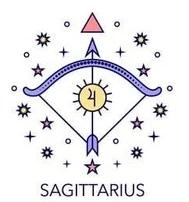
Capricorn (Dec. 22 – Jan. 19)
Rough luck lately, Capricorn? Your last cosmic sign probably hit you right on the head (literally), the universe’s way of snapping you back to reality. The chaos isn’t over, and yeah, it’s your fault. Do some good deeds, get your life organized, and quit playing with fire before you get burned again.
Sagittarius (Nov. 22 –Dec. 21)
You may be the only star in luck. The midterm season was a breeze, and the reading break will greet you with warm sunny days, grace periods, and random extensions from your professors. Whatever routine you’ve had since the beginning of the year, make sure to keep it up to keep the stars happy.
Letter after alpha
"Mad Money"
One of 24 in a
Basket material
Bust ___ (laugh hard) 18 Cross letters
Groups of buffalo
A bunch of cow dung, say
"Voila!"
Faux ___
CBS forensic drama
Profound
India's first prime minister
Honolulu's island
Singer whose name was formerly stylized with a $
"___ M for Murder"
Annually
Punch lines?
Overtime cause
Social sense in the city, or a hint to the starred clues of this puzzle!!!

Cancer (June 21 – July 22)
Tensions are rising this reading break; family, friends, and even the universe seem to be testing your patience. But don’t let the drama pull you under.
A calm walk, your favourite soup, and a few deep breaths will help you realign your energy. Remember, this storm will pass faster than you think, and you’ll come out stronger once it does.
"We're here!" 59 Authorization to take a suspect into custody
One of the Kardashians
Missing
Nobelist Wiesel
"I ___ Feeling" (Black Eyed Peas hit) 69 White Lotus character who (in my opinion) was too good for Gaitok
Mine, in Marseille
**BASE STEALER LOU** 72 She, in Italy
**QUEEN'S CO UNTERPART**
Hockey boy's "fine specimen"
You are here!
Stubble spot
Taboo
Acronym in genetic sequencing
**EITHER J in J&J**
You, in Paris 54 Term of endearment (If it was 2015)
Jr. and sr.
CROSSWORD BY BLAKE GILL



Marsh plant
"Dig in!"
Near Eastern inn
"Go me!"
"Yikes"
Golf peg
___ salts
___ Talks
Brag
___ rest (bury)
Commercial centre of Venice known for its historic marble bridge
Abu Dhabi's fed.
Condo management gp. 42 It's south of Eur.
Leo (July 23 – Aug. 22)
Maybe it’s time to focus more on yourself, Leo. The semester may have started on a rough note, but now’s your chance to find a rhythm that brings a little joy to your everyday life. The stars will turn in your favour soon; they’re just testing your patience for now..



45 Start an eight ball game over
Mix 50 ___ kwon do
Bagel option
Run out of clothes? 56 Albert of "Daniel Boone" 57 **LABOUR GROUP** 58 "Shrek!" author William
Campus military org.
Pairs
Courts 63 ___-Seltzer 64 Soviet spy org.
65 Opposite of vert.

Aquarius (Jan. 20 – Feb 18)
That double life isn’t fooling anyone, Aquarius. Use the break to reflect and drop the extra personas; it’s getting crowded in there. Try focusing on one thing (or one version of yourself) at a time. And maybe skip adding any new lies to the mix, you’ve told enough already, don’t you think?

ARTS & CULTURE
Kingston crowned its ‘most performative male’ at Lay Low Cafe
Hundreds showed up for local version of ironic, viral contest
Yael Rusonik
Assistant News Editor
Feminist literature was read, guitars were played, and tampons were thrown at Kingston’s first “performative male contest.”
Competitions over which masculine competitor most appeals to women’s tastes in fashion, music, and literature are trending among college students. Lay Low Café in downtown Kingston seized the moment on Oct. 8, packing the house as fifty contestants flaunted their vinyl records and viral Labubu keychains before hundreds of cheering spectators—all hoping to earn the ironic title of Kingston’s
“most performative male.”
In an interview with The Journal, the emcee of the contest, Naveini Vasikaran, Compsci ’28, described a performative male as someone “who’s just doing it for the ladies.”
“It’s not real,” she said. “Sometimes I’ll walk past a guy and I’ll just know it’s not authentic. Do you really like Clairo, or is that a lie?”
Vasikaran was inspired to host the event after seeing clips of similar competitions on TikTok.
“I thought it would be so funny,” she said. “And I feel like with the demographic of Queen’s students, I knew it would do so well.”
The contest began with a preliminary question period.
Candidates were asked about the women who’ve most inspired them, with “Ruth Bader Ginsburg” and “my mom” being the most common answers. Participants were also quizzed on how often tampons need to be changed, and were put on the spot to name three songs by Clairo, a popular indie songwriter.
Lay Low judges eliminated almost half of the contestants before moving onto round two. Some of the “performative males” leaned into the “performance” aspect of the event, dazzling the crowd with guitar solos, harmonica playing, and one particularly memorable acoustic DJ set of Addison Rae’s “Diet Pepsi.” After the competition was narrowed down to a final
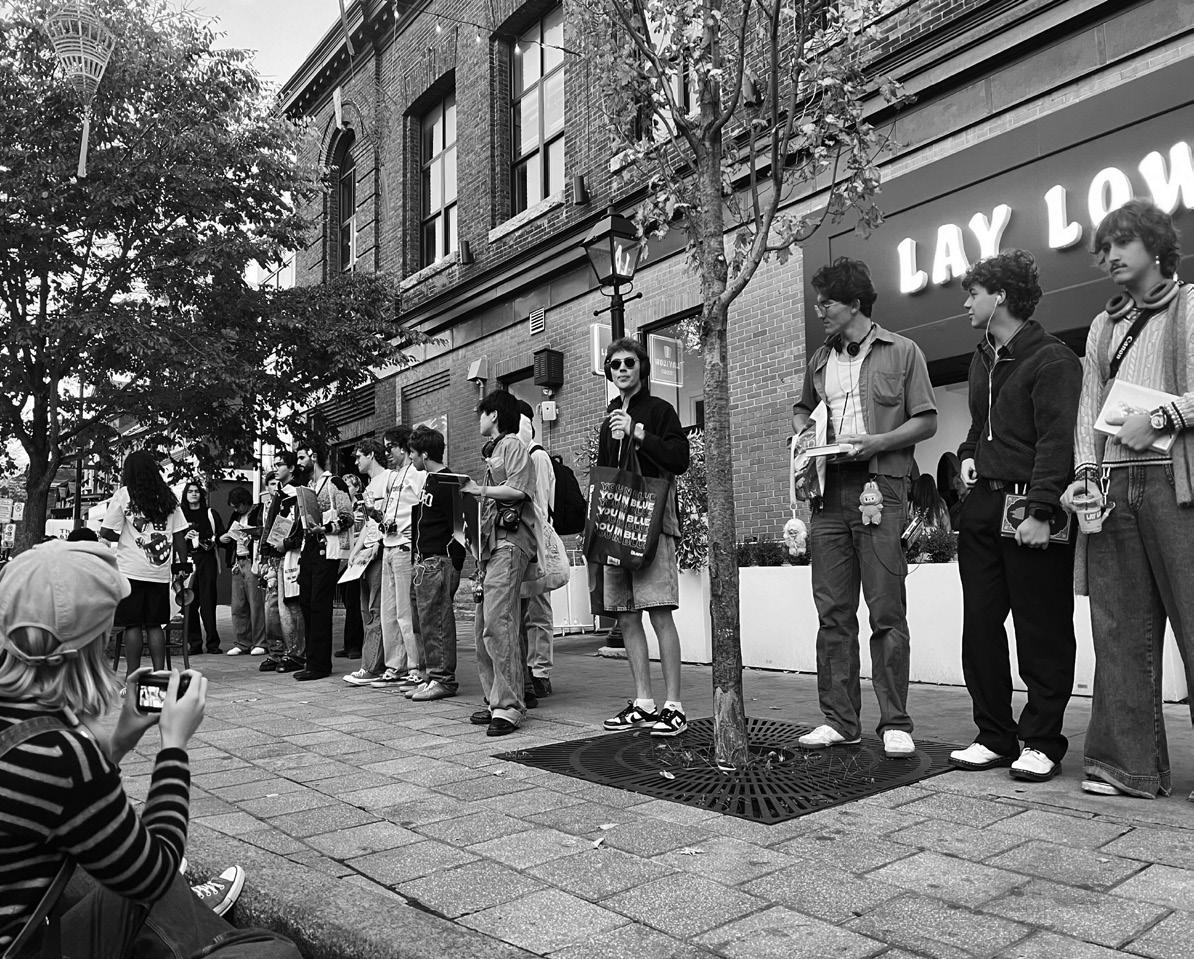
three, the winner was chosen through audience applause.
Adyan Nadeem, HealthSci ‘29, was Kingston’s newly elected “most performative male,” and won a $100 Lay Low gift card.
In an interview with The Journal, he said “being a performative male means everything to [him.]”
“[The contest] means taking care of the people around, it means just being there for women,” Nadeem said. “It’s also
about your ecological impact. I came late today, but that’s because I walked here. I didn’t take the bus. I didn’t Uber. Absolutely not.”
Each contestant received one of Vasikaran’s featured matcha drinks at Lay Low, which will be sold later this month with all proceeds being donated to Kingston’s Sexual Assault Centre.
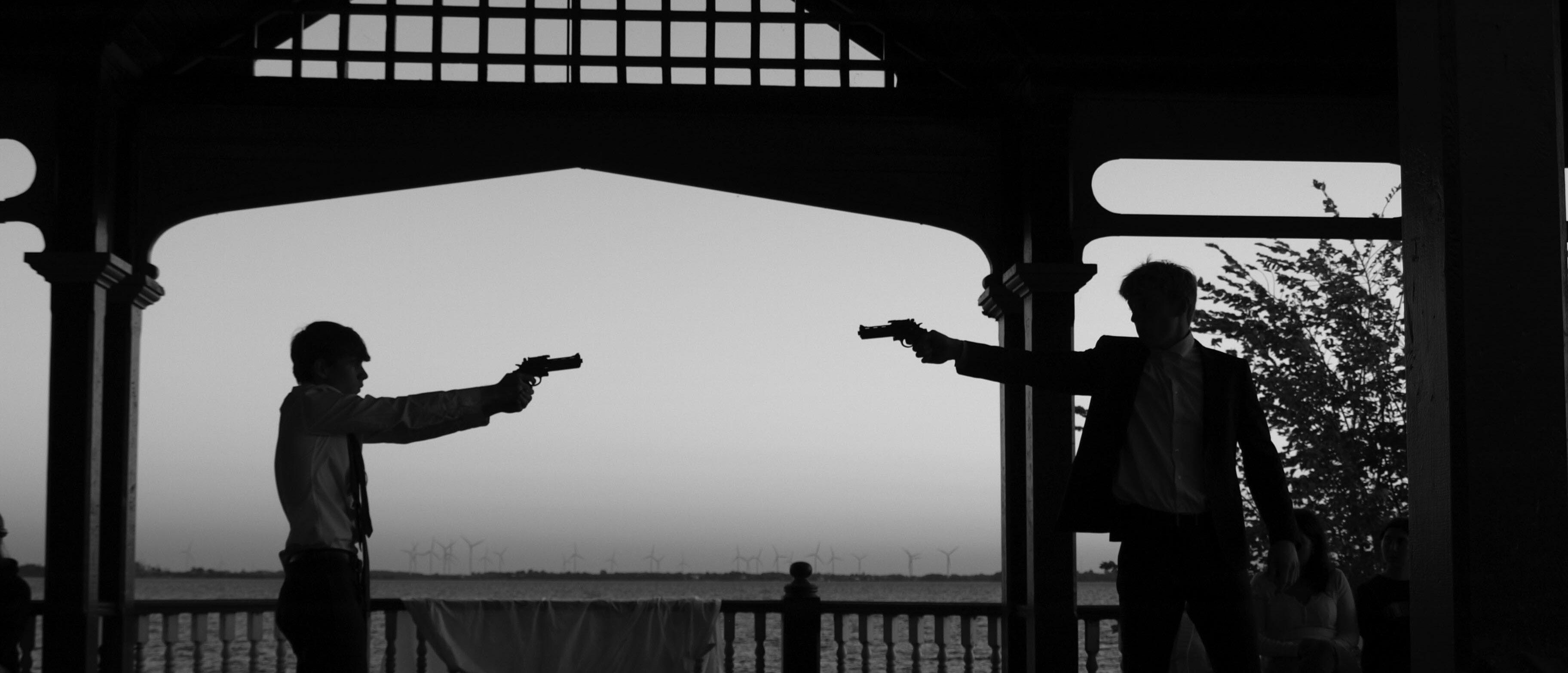
House on Fire Theatre’s ‘Never Swim
Alone’ packs an emotional punch
The student company’s debut production balances absurdity and tragedy
Daniel Gill
Assistant Arts & Culture Editor
As the sun began to set over the St. Lawrence River, audiences were treated to an outdoor spectacle like no other.
Kingston’s newest student theatre company, House on Fire Theatre, opened its inaugural production, Daniel MacIvor’s darkly comic Never Swim Alone at the scenic Newlands Pavilion located at the end of Barrie St. from Oct. 2 to 4. The Journal attended the show’s final performance on Oct. 4. The show was sold out, with an audience of approximately forty people. Presented in theatre-of-the-round, the show told a gripping story of ego, rivalry, and guilt. The play marks the directorial debut for Olivia
Buchanan, ArtSci 26. House on Fire Theatre’s co-founders
Henry Hamilton, ArtSci ’28, and Ryan Larkin, ArtSci ’28, star as Frank and Bill, childhood friends-turned-rivals who spend the performance locked in a series of absurd, ritualized contests.
From arguing over who can tell the better story to whose suit is nicer, Frank and Bill’s battles are scored like rounds in a boxing match, judged by a referee played by Hayley Watson, ArtSci ’26, who observes the two men compete from the middle of the stage and decides each round’s winner. As the rounds continue, the contests grow stranger and darker, peeling back layers of bravado until a shared childhood tragedy surfaces, revealing
the origin of their endless competition.
Frank and Bill’s back and forth bickering makes up the bulk of the show’s dialogue. For principal actors and producers Larkin and Hamilton, being involved in the production so heavily on- and offstage sometimes complicated communication.
“Sometimes the lines do get blurry,” Buchanan said in an interview with The Journal. “We just remind ourselves when we need it of how we’re speaking and who we’re speaking to in which role, because the boys are wearing many hats.”
Performed outdoors, Never Swim Alone used its surroundings to deepen its themes of isolation. “Lots of people have described when the show begins, they hear seagulls or the sound of
the water,” Buchanan said. “You couldn’t pay an actor a sound cue to do that, it would sound too prepared.”
While environmental effects were left up to the elements, the play’s script was meticulously crafted. Buchanan aimed to balance the comedy with grief.
“People tend to enjoy themselves for the first half of the show, and then the second half gets a little bit less fun, a little bit more serious,” she said. “We wanted audiences to consider the consequences of actions, and deal with tragedy and comedy at the same time.” Larkin and Hamilton’s performances toward the end of the show expressed deep emotions, bringing many audience members to tears.
A particularly charged moment came when Frank knocked Bill to the ground, instigating a physical fight that almost ended in death.
Staring into Bill’s eyes as he lay on the floor sent a chill down my spine, almost making me forget I was watching a play. Moments like these relied
on strong chemistry between the actors, something Buchanan attributed to her direction. “My goal was to challenge them, but also help push them to be better actors, better performers, and better collaborators,” she said. “It’s always more engaging when your actors are really acting with each other.”
The show’s final performance felt like the payoff of a risk well-taken. “Every show is different, which is very exciting,” Buchanan said. “I hope this audience can just see all the work that the cast and the crew [have] done.”
With Never Swim Alone, House on Fire Theatre proved bold risks and raw settings can yield something unforgettable. The result is a production that feels as spontaneous and alive as the space it inhabits, leaving audiences laughing, uneasy, and deeply moved.
The contest took place at 5:30 p.m. on Oct. 8. PHOTO BY YAEL RUSONIK
Never Swim Alone” was staged at the Newlands Pavilion from Oct. 2 to 4.
PHOTO BY AMY MCCULLOCH
Poem: ‘Queen’s university’
Robert Ferriman Contributor
This Poem is written it’s just to explain What each letter means in “Queen’s University’s” Name, “Q” Stands for “QUALITY” it’s what we believe It’s something that’s needed to help one achieve,
“U” Stands for “UNRELENTING” in pursuing one’s dreams It takes dedication and that’s what that means,
“E” Stands for “EQUALITY” as it should be
Because everyone’s welcome here that you will see,
“E” Stands for “ENCOURAGEMENT” in whatever you do And Our Faculty’s here to always help you,
“N” Stands for “NOTEWORTHY” as in Our Name That’s brought Us Prestige that We can acclaim,
“S” Stands for “SIGNIFICANT” the difference We make Our Standards are high that we won’t forsake,
“U” Stands for “UNIVERSAL” We’re known World wide That’s something in which We take great Pride,
“N” Stands for “NOTABLE” and that’s certainly true Our Graduates are recognized this whole World through,
“I” Stands for “INNOVATIVE” it’s showing you care By what you learn and what you share,
“V” Stands for “VENERABLE” and here’s the proof We’re Creating Tomorrow’s leaders from today’s current Youth,
“E” Stands for “EXCELLENCE” in that We believe That We strive for in what We achieve,
“R” Stands for “RESPECT” it’s something you earn By giving it you get back in return,
“S” Stands for “SCHOLAR” it’s taking great Pride In what You’ve accomplished it’s that feeling inside,
“I” Stands for “INDELIBLE” right from the start You’ve set the Standard by doing your part,
“T” Stands for “TRADITION” a time- Honored way That you live by each and every day,
“Y” Stands for “YOU” as it should be
Exemplify Queen’s Best for this World to see,
If anyone should ask what makes “Queen’s” Name Let them read this and it will explain.

‘The Life of a Showgirl’ is missing its titular character
Swift’s newest album is a commercial juggernaut and a cultural flop
Mannat Mehra & Marijka Vernooy
Journal Staff
The “showgirl” has missed her curtain call on Taylor Swift’s newest album.
On Oct. 3, Swift released The Life of a Showgirl (TLOAS), reuniting her with long-time collaborators Max Martin and Shellback, the architects behind hit albums like 1989. The album’s a commercial success: it broke U.S. records for most vinyl albums sold in a single week at 2.7 million copies. The album’s promotional film, The Official Release Party of a Showgirl, only ran in theatres from Oct. 2 to 5, but topped the global box office. Despite strong sales, the album has drawn backlash from fans and critics alike for weak lyrics and melodies—proving
Swift’s brand may be losing some luster.
Swift appeared on The Tonight Show with Jimmy Fallon on Oct. 6, where she said TLOAS is “the most well-matched era in terms of where my life was when I wrote it and where I am now.” Fans feel differently, claiming the album’s synth-pop ballads don’t match the show-stopping visuals Swift used in promotional materials. And there’ve been a lot of promotional materials: at the time of publication, Swift released 24 variant versions of the TLOAS vinyl, a move some call greedy. Marketing aside, the album itself is a mixed bag. Sonically, it shimmers: buoyant synths, soft disco basslines, and Motown guitar riffs are closer to Swift’s Midnights and 1989
Kingston libraries celebrate canadian library month
2025 theme emphasizes the services Kingston Frontenac Public Library offers beyond lending books
Marijka Vernooy
Senior Arts & Culture Editor
For those whose most recent memories of the library are from childhood, it may be time to re-visit.
This October, Kingston Frontenac Public Library (KFPL) celebrates Canadian Library Month, which was launched by the Canadian Library Association (CLA) in 2006 to encourage Canadians to explore their local libraries.
This year’s theme, “Libraries for Life,” emphasizes the social and educational opportunities libraries provide for people of all ages. Patrons are encouraged to share their stories on the Canadian Library Story Month Wall at their local branch for a chance to earn prizes.
I was enticed by these prizes to explore the Story Wall at KFPL’s Central Branch on Johnson St. Children scribbled about their favourite story time activities at the library, and college students praised the
quiet study areas upstairs. The Story Wall was a touching tribute to KFPL’s influence in Kingston, and illustrated the “Libraries for Life” theme clearly by highlighting the lives KFPL has touched.
Emphasizing personal connections to the library helps KFPL a few different ways. The public institution is funded mainly by taxpayer dollars from the City of Kingston and Frontenac County, KFPL’s CEO and Chief Librarian Laura Carter, ArtSci ’02, MPA ’13, said in an interview with The Journal. As part of Canadian Library Month, she hopes members of these communities will “discover all of the things [KFPL] has to offer,” which can help with funding.
Today, Carter says finding a personal connection to the library’s important “particularly in a society where people are lonelier than ever [and] spending more time online.” Since the COVID-19 pandemic, adolescents and adults have struggled to bounce back socially. The World
and better.”
than lyrically-dense offerings like The Tortured Poet’s Department. Many of the tracks, like “Honey,” “Opalite,” and “Wi$h Li$t” seem to be about Swift’s recent engagement. Where the album works best is savouring this positivity, basking in the glow of solid, upbeat pop songs.
TLOAS isn’t disappointing for how it sounds, but what it says. Swift’s lyricism, once her sharpest weapon, feels dulled by repetition. Familiar motifs of rebirth, reputation, and romantic deliverance reappear without reinvention. The title track, featuring Sabrina Carpenter, lands like an afterthought, a neatly wrapped metaphor for celebrity that feels more obligatory than revelatory.
As The Guardian wrote, “for all its polish, Showgirl offers little she hasn’t already sung
In some ways, TLOAS is outright worse than Swift’s previous works. Critics call the album’s lyrics “cringe,” particularly verses like, “We all dressed up like wolves, and we looked fire,” from “Eldest Daughter.” On one especially odious line from “CANCELLED!” asks, “Did you girl boss to close to the sun?” A strange remark from a billionaire like Swift, “cancelled” for things like her massive carbon footprint of her private jet. By and large, the internet is bashing TLOAS for a lack of self-awareness strikingly different from Swift’s typical, meticulous approach to music. For nearly two decades, Swift has built her career around control—of narrative, of emotion, of craft. But TLOAS arrives at a rare moment when that control has finally paid off. She owns her masters. She’s conquered the world’s biggest tour that is the most financially successful tour in history. Her engagement has neatly tied off years of speculation that once defined her public life. For the first time in a long time, there are no loose threads to chase, only a blank page.
If her last few albums were about rewriting history through re-releases and scathing sad-songs, Swift’s future work might be about simply living in the moment. TLOAS isn’t her best work, but it’s content and radiant in its calmer moments. Maybe, for Swift, that’s the most radical act of all.

Health Organization estimates one in six people suffer from loneliness.
“Even if you’re [at a library] and just doing your own thing—studying on your own or reading a book on your own— you’re still in a space where there’s social connection,” she said. KFPL fosters connection through community events.
A portrait event later this month will expand on the theme of “Libraries for Life,” where younger children paint older adults whom they’re paired with. The event focuses on socializing “with people maybe you wouldn’t encounter in your everyday life,” which Carter said connects more broadly with the library’s function as a community
hub. “Specifically, this year, we’re focused on the impact we make from birth all the way through adulthood,” Carter said.
The library can have impacts beyond community and literacy. “For someone to say, you know, ‘Because of the library, I was able to get a job because I could use the computers or get resume help’ emphasizes the difference we make in people’s lives,” Carter said. In this way, she said, KFPL’s services extend beyond lending books and community programming.
“The Life of a Showgirl” released on Oct. 3.
PHOTO BY ARDEN MASON-OURIQUE
Canadian Library Month display at KFPL.
PHOTO BY CLAIRE BAK

ILLUSTRATION BY JULIA LUDDEN
I don’t know what I want to be when I grow up
simple. Doctors helped people, and doctors were smart. I wanted to help people, and I wanted to be smart—so I would be a doctor.
Aaniqa Karmali QTBIPOC Advisor
From the very first time I was asked, “What do you want to be when you grow up?” the endless possibilities left me awestruck without an answer.
In elementary school, I would’ve told you I wanted to be a doctor. But it all started in grade one, when I was assigned a school project about my future career. Leading up to the deadline, I changed my mind short of a hundred times about what I wanted to proclaim as my dream job.
“Leading up to the deadline, I changed my mind short of a hundred times about what I wanted to proclaim as my dream job.
I wanted to be a teacher … and also a scientist … and a lawyer, and detective, and doctor, and author. Although the stakes truly couldn’t have been lower, declaring my dream job on a poster board felt like sending a crucial message into the universe—like placing a bid on my destiny.
Eventually, after days of ruminating on what felt like the most important decision of my life, I landed on wanting to be a doctor. My uncle was a doctor, and my time on the family computer was limited, so I relied on his expertise and the few glimpses I caught of House M.D. to make this monumental decision. Being six years old, my criteria for my dream job were comically
I stuck with wanting to be a doctor for a while after having announced it to the cosmos in grade one. But a few years later, I changed my mind again, as many kids do. Each time I changed my mind, I was overwhelmed by the sea of options—each option led to a completely different life, and I wanted to live them all.
This dilemma followed me through elementary, middle and high school. Until grade nine, I yo-yoed between wanting to be a lawyer, epidemiologist, professor, journalist, and doctor. At this point, my dream job criteria was more advanced. I wanted a career that would be intellectually stimulating, that would contribute something positive to the world and would pay enough for me to afford a house with a garden. Today, I find myself returning to this criteria when I reflect on my future.
In high school, a new criterion entered the mix—I wanted a job that would be impressive. At this point in my life, I constantly felt I had to prove myself to my peers, my family, and even my closest friends.
“At
this point in my life, I constantly felt I had to prove myself to my peers, my family, and even my closest friends.
Like many teenagers, I was deeply insecure about every facet of my existence. But of course, I couldn’t admit that to anyone. In my mind, I had to prove that I was smart enough to make up for what I believed I lacked in looks and
social prowess.
Throughout high school, I sought to craft the most impressive resume possible, complete with sky-high grades and awards recognizing my potential. I dedicated substantial time and effort to studying, often at the cost of my own well-being. While I acknowledged the intrinsic value of education, I cared more about other people’s reactions to my success. Whenever I started to tire in the midst of studying, I’d imagine what my peers would think if I got anything below an A. I believed good grades would ultimately lead to a good career, and if I achieved that, I would be proving myself to those around me.
Looking back, I’m not quite sure what exactly I was trying to prove. On the surface, I wanted to prove anyone who doubted my abilities wrong, from my toxic high school “best friend” to an older relative with antiquated views about women’s roles in society. At a deeper level, I think I was trying to prove myself wrong—to shut up the inner voice that minimized my accomplishments and exaggerated my mistakes.
This desire to impress dominated my thoughts about my future. I wanted people to be in awe at my ambitions and regret any of their preconceived notions about my capabilities. I chose my dream job accordingly. I enjoyed and did well in both my science and English classes, but I quickly realized that one was valued more than the other. Jokes about arts majors becoming overqualified baristas and the prestige around STEM careers steered me away from the arts and social sciences. My sights returned to the dream job I had decided on when I was six—becoming a doctor.
What seemed to be a full-circle decision was really a sign I hadn’t matured as much as I thought. I was drawn to the allure of a prestigious career, and my guiding compass spun in whatever direction I believed would impress the people around me. Approaching the end of my high school career, I started to think more deeply about the career and life that I desired.
Despite starting to get cold feet, I hesitated to make any drastic changes to my life plan.
“Despite starting to get cold feet, I hesitated to make any drastic changes to my life plan.
After all, I had spent four years working towards this one goal.
It’d be ridiculous to just throw that all away. So, I applied to university programs based on this plan.
Soon after, I started to receive acceptances to my “dream programs.” Rather than being elated, however, I felt numb. I had a sinking feeling that something was wrong, and I couldn’t shake this feeling for months. Planning my future based on other people’s expectations had finally caught up to me. Eventually, I decided to take a gap year—mainly because of other reasons, but I was relieved to have more time to figure out what I wanted to do with my life. I thought about my future, the one I chose from a sea of possible futures.
I found myself relating far too much to Esther Greenwood, the protagonist of Sylvia Plath’s The Bell Jar. I was stuck staring at a giant fig tree, each plump fig representing a different future—a different life. “I wanted each and every one
of them, but choosing one meant losing all the rest, and, as I sat there, unable to decide, the figs began to wrinkle and go black, and, one by one, they plopped to the ground at my feet,” Plath wrote.
I ultimately decided the doctor pathway wasn’t right for me. Now, I’m pursuing an arts degree, something my high school self wouldn’t understand at all. There’s no way to know whether I made the “right” decision, and that’s what makes choosing such a hard task. But what Esther Greenwood overlooked is that life isn’t subject to the fate of a single fig tree. Life’s a series of fig trees—each decision important, but not the last fig we’ll ever pick.
To this day, I find myself wondering about what my life would look like if I had made one decision over another—if I’d stuck with my aspirations to become a doctor, or if I had decided to try out engineering like some of my peers. Through all this deliberation, I’ve learned that my life is worth more than appealing to other people’s expectations, and that I’m allowed to make mistakes.
“I’ve learned that my life is worth more than appealing to other people’s expectations, and that I’m allowed to make mistakes.
When I graduate, a new fig tree will sprout before me, and I’ll be forced to pick just one. I might pick the wrong fig, but its seeds will bear the fruit of infinite futures.
Want to write a postscript? E-mail journal_postscript@ams.queensu.ca
